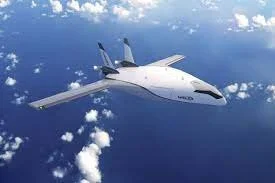AI in the Air: How Aerospace Engineering is Getting Smarter
Image courtesy of CompositesWorld
Artificial Intelligence (AI) has become a critical tool for the aerospace industry. It’s helping improve fuel efficiency, part design, inspection processes, and maintenance, repair, and overhaul (MRO). AI is also enabling engineers to give passenger, military, and emergency response craft new capabilities. Some of these can operate fully or semi-autonomously, thanks to AI.
In 2023, aerospace engineers are looking to take AI even higher. At least six aerospace conferences this year plan to focus on intelligent and/or autonomous systems. The American Institute of Aeronautics and Astronautics has called for papers about machine learning to showcase the many ways AI can impact the industry, which is seeing increased demand and expenses after extended COVID-19 lockdowns.
Here's a taste of how AI is taking flight.
Image courtesy of Inteligent Living
AI Unlocks New Potential
In the sky, the big use of AI is for autonomous aircraft. Manufacturers building drones and small planes often spend a great deal of effort on vision systems, and employ AI in sensors and feedback systems that monitor data necessary for a successful flight, including wind, weather, and air traffic.
Kyriakos Vamvoudakis, the Dutton-Ducoffe Endowed Professor at The Daniel Guggenheim School of Aerospace Engineering at Georgia Tech, is currently working on several projects to increase AI’s role in operating flying craft.
“One project involving AI is our development of autonomous land-based vehicles that learn from human-driven vehicles. The point of this work is reinforcement, giving the autonomous vehicles positive rewards if they perform well,” says Vamvoudakis.
The findings can be applied to flying vehicles to reduce the amount of work aerospace engineers need to do to perfect a craft. When the AI agent learns from human behavior, it can make better decisions about a wide range of actions, from handling turbulence to landing after an accident. It can also accomplish these tasks under different conditions, such as a clear day or a snowstorm.
Certain types of aircraft have the potential to be so profitable that several companies are working on them simultaneously. Self-flying air taxis are a popular concept. These planes are sometimes called package or passenger drones, depending on whether they carry objects or people. EHang, a China-based company, Wisk, a California-based company, and Reliable Robotics, which is also based in California and partners with Cessna, are all working on self-flying taxis.
Aurora Flight Sciences is a Manassas, Virginia-based research subsidiary of Boeing that focuses on special purposes unmanned aircraft. One of Aurora’s projects is Centaur, an optionally piloted aircraft system. The system allows a craft to automatically take off and land. It also utilizes an automated contingency management system.
Pleaes click HERE to view the original article.


